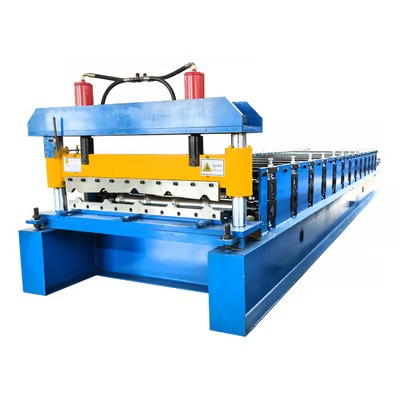What is a CNC Roll Forming Machine?
A CNC roll forming machine is a precision tool used in the metalworking industry to shape metal sheets into desired profiles. It combines computer numerical control (CNC) technology with roll forming, a continuous bending process, to produce consistent and high-quality metal components. This article will explore the various aspects of CNC roll forming machines, including their working principle, applications, advantages, and key features.
Working Principle of CNC Roll Forming Machines
CNC roll forming machines operate based on a simple yet effective principle. A metal sheet is fed into the machine, and a series of rollers gradually shape the sheet into the desired profile. Each roller in the machine is designed to perform a specific bending action, gradually forming the metal sheet as it passes through the rollers. The CNC technology integrated into the machine ensures precise control over the bending process, resulting in accurate and repeatable profiles.
Applications of CNC Roll Forming Machines
CNC roll forming machines find wide-ranging applications across various industries. They are commonly used in the production of automotive parts, construction materials, metal furniture, electrical enclosures, and many other metal components. The ability to create complex and customized profiles makes CNC roll forming machines invaluable in industries that require high precision and consistency in metal shaping processes.
Advantages of CNC Roll Forming Machines
CNC roll forming machines offer several advantages over traditional metal forming methods. Firstly, they provide excellent repeatability, ensuring consistent quality in mass production. The CNC control allows for precise adjustments, reducing the risk of errors and material waste. Additionally, CNC roll forming machines offer high production rates, making them ideal for large-scale manufacturing. They are also versatile, capable of producing a wide range of profiles with minimal tooling changes.
Key Features of CNC Roll Forming Machines
CNC roll forming machines come with a range of features that enhance their performance and efficiency. One key feature is the use of servo motors, which provide precise control over the movement of rollers. This ensures accurate profile formation and reduces the need for manual adjustments. Another important feature is the use of quick-change tooling systems, allowing for faster and easier profile changeovers. Additionally, many CNC roll forming machines come equipped with automatic material feeding systems, further streamlining the production process.
Factors to Consider When Choosing a CNC Roll Forming Machine
When selecting a CNC roll forming machine, several factors should be taken into consideration. These include the required profile complexity, material thickness, production volume, and available budget. It is important to choose a machine that can handle the desired profile with precision and efficiency. Additionally, considering the reputation and customer support of the machine manufacturer is crucial to ensure long-term reliability and service.
Maintenance and Safety of CNC Roll Forming Machines
Maintaining a CNC roll forming machine is essential for its longevity and optimal performance. Regular cleaning, lubrication, and inspection of the rollers, gears, and other components are necessary to prevent wear and tear. It is also important to follow the manufacturer's guidelines for maintenance intervals and recommended spare parts. Safety measures should always be prioritized, including the use of personal protective equipment and proper training for machine operators.
Future Trends in CNC Roll Forming Machines
The field of CNC roll forming machines is constantly evolving, and several trends are shaping its future. One notable trend is the integration of artificial intelligence (AI) and machine learning algorithms into the machines, allowing for predictive maintenance and adaptive control. This can improve efficiency, reduce downtime, and optimize the production process. Another emerging trend is the use of lightweight materials, such as aluminum alloys, in roll forming. As industries demand lighter and more sustainable components, CNC roll forming machines are adapting to meet these changing requirements.
Conclusion
CNC roll forming machines are powerful tools that offer precision, versatility, and efficiency in metal shaping processes. With their ability to create complex profiles and handle high production volumes, they have become indispensable in various industries. By considering the working principle, applications, advantages, key features, and maintenance aspects of CNC roll forming machines, businesses can make informed decisions when selecting and utilizing these machines for their metal fabrication needs.

